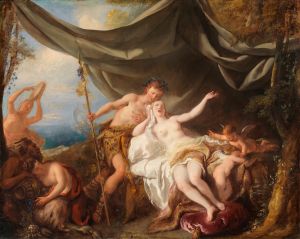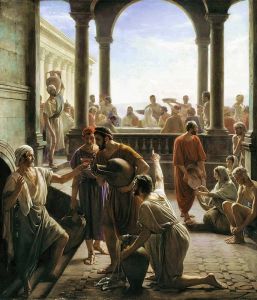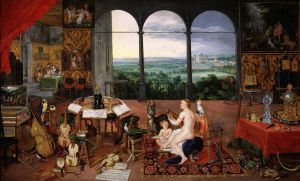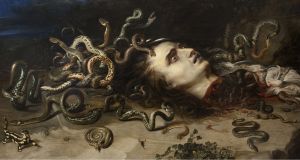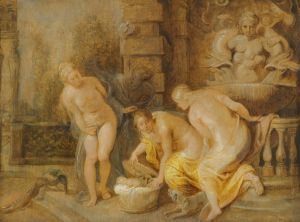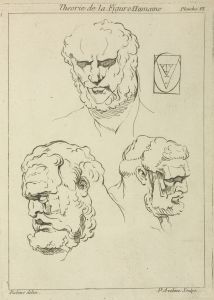
The Parade of Silenus
A hand-painted replica of Peter Paul Rubens’s masterpiece The Parade of Silenus, meticulously crafted by professional artists to capture the true essence of the original. Each piece is created with museum-quality canvas and rare mineral pigments, carefully painted by experienced artists with delicate brushstrokes and rich, layered colors to perfectly recreate the texture of the original artwork. Unlike machine-printed reproductions, this hand-painted version brings the painting to life, infused with the artist’s emotions and skill in every stroke. Whether for personal collection or home decoration, it instantly elevates the artistic atmosphere of any space.
Peter Paul Rubens, a prominent Flemish Baroque painter, is renowned for his dynamic compositions and vibrant use of color. One of his notable works is "The Parade of Silenus," which exemplifies his mastery in depicting mythological subjects with exuberance and vitality. This painting, like many of Rubens' works, reflects his deep engagement with classical mythology and his ability to convey complex narratives through art.
"The Parade of Silenus" portrays Silenus, a figure from Greek mythology, who is often associated with Dionysus, the god of wine. Silenus is typically depicted as a jovial, rotund, and often inebriated companion of Dionysus, embodying the spirit of revelry and indulgence. In Rubens' depiction, Silenus is surrounded by a lively entourage, which may include satyrs, nymphs, and other mythological creatures, all participating in a festive procession.
Rubens' treatment of the subject matter is characteristic of his style, which often includes robust figures, dynamic movement, and a sense of theatricality. The figures in "The Parade of Silenus" are likely rendered with a sense of vitality and motion, capturing the essence of celebration and the chaotic energy associated with Bacchic rites. The composition would typically be filled with rich, warm colors and dramatic contrasts of light and shadow, enhancing the overall sense of movement and excitement.
Rubens was known for his ability to synthesize influences from various artistic traditions. His work was deeply influenced by the Italian Renaissance, particularly the works of Titian and Michelangelo, which he studied during his time in Italy. This influence is evident in his robust figures and the dynamic compositions that characterize his paintings, including "The Parade of Silenus."
The painting also reflects Rubens' interest in human anatomy and his skill in rendering the human form. His figures are often depicted with a sense of weight and volume, demonstrating his understanding of the human body and his ability to convey a sense of physical presence. This attention to detail and anatomical accuracy is a hallmark of Rubens' work and contributes to the lifelike quality of his paintings.
Rubens' work, including "The Parade of Silenus," was highly influential in the development of Baroque art. His dynamic compositions and vibrant use of color set a standard for Baroque painting and influenced generations of artists. His ability to convey complex narratives and emotions through his art made him one of the most celebrated painters of his time.
While specific details about the provenance or current location of "The Parade of Silenus" may not be readily available, Rubens' works are housed in major museums and collections worldwide, reflecting his enduring legacy and the continued appreciation of his contributions to art history. His paintings remain a testament to his artistic genius and his ability to capture the spirit of his subjects with unparalleled skill and creativity.







